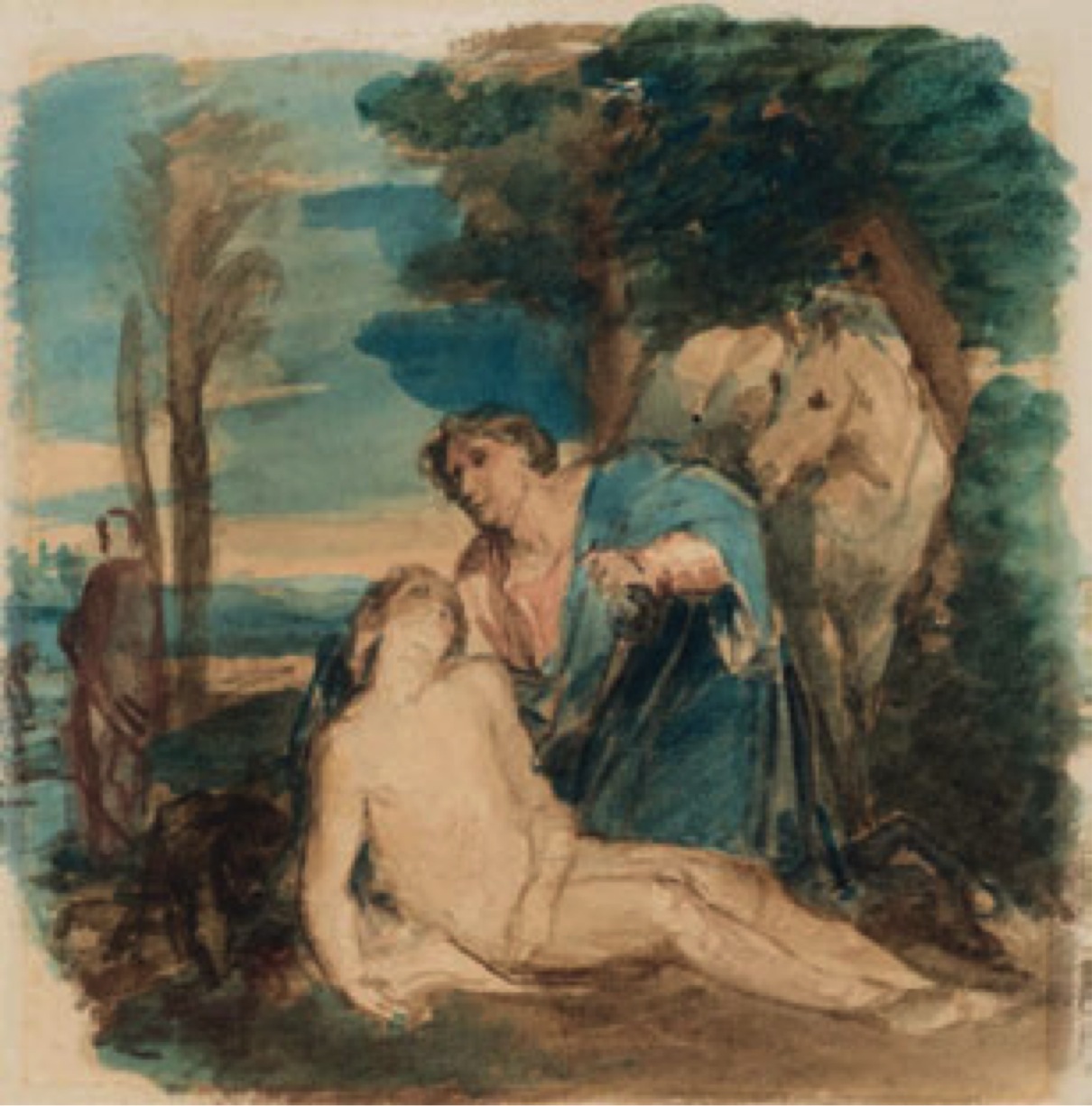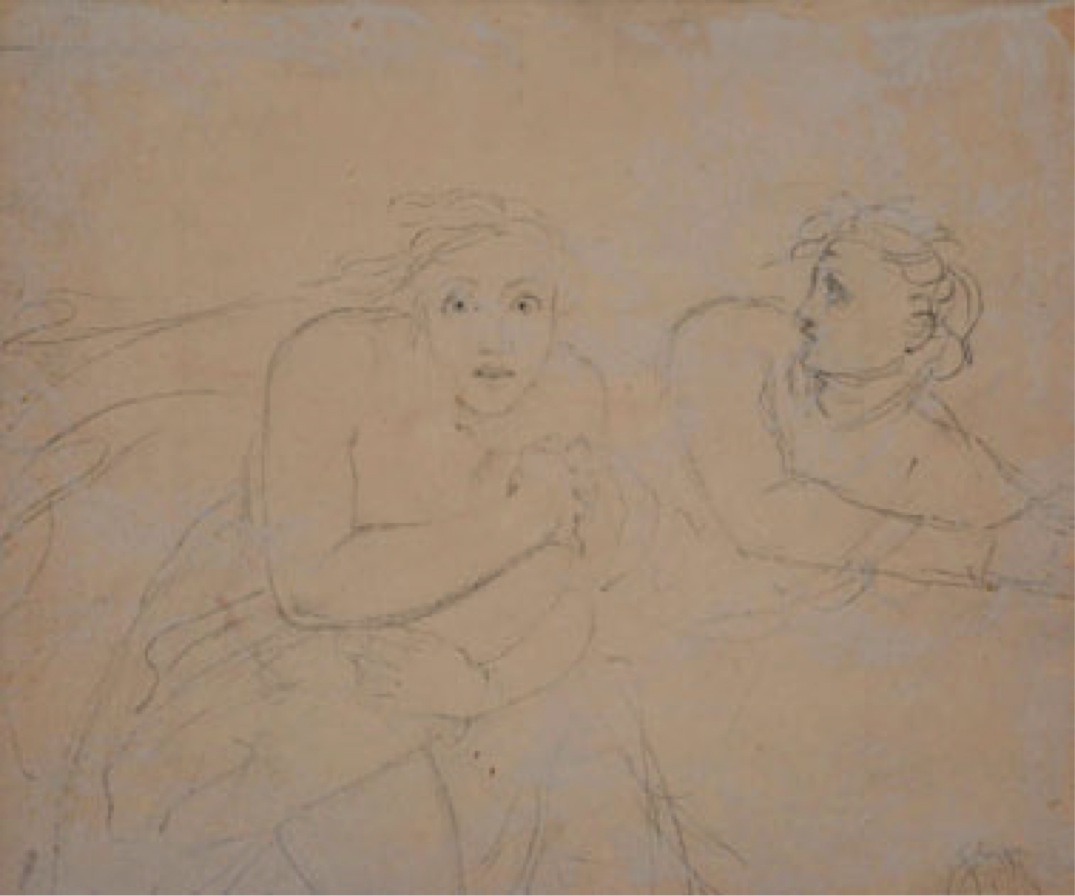

Recto: The Good Samaritan (version A—with white horse). George Frederick Watts (1817−1904). Watercolor on paper. 221 x 176 mm (8 11/16 x 6 15/16 inches). Inscribed along lower edge in graphite and erased. Verso: Fragment of two figures in flight. George Frederick Watts (1817−1904). Graphite. 221 x 176 mm (8 11/16 x 6 15/16 inches). [Click on the images to enlarge them.]
Commentary by Paul Crowther
The parable of the good Samaritan is told by Jesus in the New Testament, Luke 10: 25−37. After a man is robbed and left injured on the road to Jericho, his plight is ignored by a passing priest, and a Levite. It is left to a Samaritan to care for the injured man, and take him to safety—even paying for the costs of his recuperation. The story is a parable for "Love thy neighbour as thyself" and is given special force by the fact that Samaritans and Jews were generally enemies. Watts did several full-size oil paintings on the Good Samaritan theme. One of them—with the figures standing upright—was exhibited at the Royal Academy in 1850 (a later version of the same composition is in the Watts Gallery at Compton, Surrey). A smaller work, with the victim lying by the roadside, was done in 1899.
You may use these images without prior permission for any scholarly or educational purpose as long as you (1) credit the Crowther-Oblak Collection of Victorian Art and the National Gallery of Slovenia and the Moore Institute, National University of Ireland, Galway (2) and link your document to this URL in a web document or cite the Victorian Web in a print one.
Bibliography
Crowther, Paul. Awakening Beauty: The Crowther-Oblak Collection of Victorian Art. Exhibition catalogue. Ljubljana: National Gallery of Slovenia; Galway: Moore Institute, National University of Ireland, 2014. No. 143.
Created 12 January 2015
